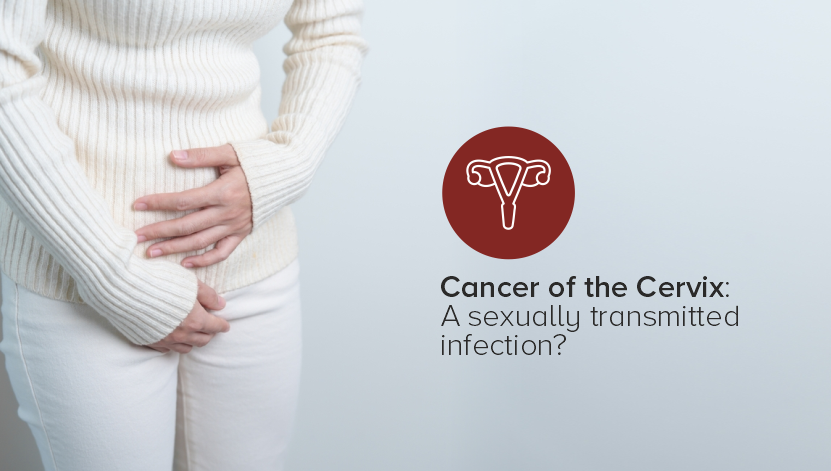Cervical cancer is one of the most common and deadliest forms of cancer among women worldwide. Despite the advances in medical research, public awareness, and vaccination programs, there are still misconceptions about its causes and prevention.

Cervical cancer is a type of cancer that occurs in the cells of the cervix — the lower part of the uterus that connects to the vagina. The primary cause of cervical cancer is HPV, a common virus that can be transmitted from one person to another through sexual activity. Most people with HPV do not develop cancer, and in most cases, the body's immune system clears the virus. However, persistent infections can lead to precancerous lesions, which may develop into invasive cervical cancer when left untreated.
HPV is the most common sexually transmitted infection (STI). There are more than 200 types of HPV, with more than 40 types that can infect the genital area. Most HPV infections don't lead to cancer, and many go away on their own. But certain types of HPV can cause cervical cancer. These are called high-risk types of HPV.
When HPV viruses infect cells in the cervix, it can cause those cells to behave abnormally. Over time, these abnormal cells may become cancerous. It's crucial to understand that the link between HPV and cervical cancer is a critical one, as it radically influences how the disease is managed and prevented.
Vaccination against HPV has been a game-changer in the fight against cervical cancer. The HPV vaccine is recommended for preteen boys and girls at age 11 or 12, although it can be given as early as age 9. Vaccination is crucial, as it helps prevent the types of HPV that most commonly cause cervical cancer.
The vaccines are safe and effective. They can protect both men and women from cancers caused by HPV when given in the recommended age groups. HPV vaccines are given in two shots for girls and boys aged 9-14, and three doses are recommended for those vaccinated at age 15 or older, or for those with weakened immune systems.
Early detection of cervical cancer can lead to better treatment outcomes. The main screening tests include the Pap test and an HPV test. A Pap test can find abnormal cells in the cervix before they become cancer. An HPV test looks for the virus that can cause these cell changes.
It's important to note when to start and how often you should be screened as guidelines vary by country and age. However, regular screening has significantly reduced deaths from cervical cancer because it allows for early detection and treatment of abnormal cells that may become cancerous.
If cervical cancer is diagnosed, your healthcare provider will work with you to find the best treatment plan. The choice of treatment depends on the stage of the cancer, your age and overall health, and your personal preferences.
Treatment for cervical cancer may include surgery, brachytherapy, radiation therapy, chemotherapy, or a combination of these. The goal of the treatment is to cure the cancer, although this is not always possible. Treatment may also be used to shrink or slow the progress of the cancer if it is advanced and can't be cured.
Cervical cancer disproportionately impacts women in low- and middle-income countries due to limited access to screening and early treatment. The disease's burden reflects broader public health challenges, including inequitable access to healthcare services.
The World Health Organization (WHO) has called for global action to eliminate cervical cancer as a public health problem. This initiative involves increasing HPV vaccination and cervical screening coverage, ensuring timely follow-up and treatment, and promoting palliative care for women with advanced disease.
Misinformation can be a barrier to effective prevention. Some individuals believe that cervical cancer is not a sexual infection, but the reality is that most cases are directly linked to HPV, which is an STI. Debunking myths and promoting accurate information can help individuals make informed decisions about their health.
Cervical cancer is preventable with regular screening and early detection. It is also highly treatable when diagnosed in its early stages. Education and awareness are critical components of the multi-pronged approach to reducing the burden of cervical cancer globally.
In light of the profound connection between HPV and cervical cancer, empowering individuals to take charge of their health is paramount. This includes discussing vaccination with healthcare providers, following recommended screening guidelines, and understanding the risk factors for cervical cancer.
Individuals can also engage in open dialogue with their partners about sexual health, which is essential for preventing the spread of HPV and other STIs.
Cervical cancer is a formidable health challenge, but one that can be overcome through a combination of education, vaccination, screening, and research. By understanding the pivotal role that HPV plays in the development of this disease, individuals and societies can take proactive steps to prevent its occurrence and ensure better health outcomes for all. For comprehensive cervix cancer treatment in India, American Oncology Institute is recognized as the top multi-disciplinary oncology hospital known for its expertise and advanced care.